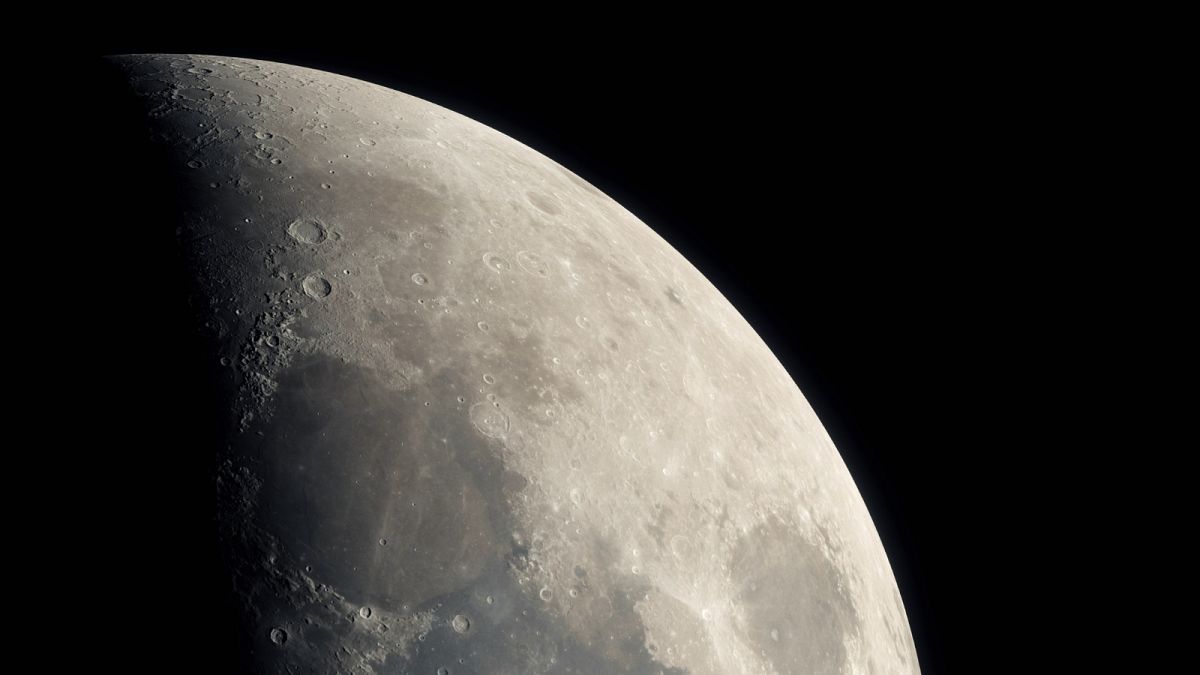The successful lunar mission by Intuitive Machines last month was in part subsidised by NASA - and it's only the beginning.
The successful but short Intuitive Machines Moon landing last month will be the first in a series of attempts by private companies in the United States from now until the end of the decade.
That’s the takeaway experts in the field want the general public to have from a historic venture cut short.
The mission fizzled out five days in because of a loss of power to the lunar lander Odysseus as the Sun moved away from the last illuminated solar panel on its back.
"This mission is a pathfinder," Joel Kearns, deputy associate administrator for exploration in NASA’s Science Mission Directorate, said in a press conference a few days into the mission. "You can think of it as a flight test".
That’s because the Intuitive Machines mission got part of their funding from a relatively new, little-known NASA programme called the Commercial Lunar Payload Services (CLPS) initiative. Its aim: putting the responsibility and technicalities of a Moon landing on to private companies for the first time.
Those in the industry say this new initiative from the Us space agency is starting a chain of frequent Moon launches that will define the US presence in space for the next decade as the country prepares for another human landing.
Nicholas Peter, the president of France’s International Space University (ISU) calls this new NASA programme the beginning of the US' "new race to the Moon," as they try to compete with recent successful landings from India, Japan, and China.
"[CLPS] is providing more opportunities to go to the Moon to develop scientific missions, now that it’s not restricted to government bodies," Peter told Euronews Next.
NASA's new mission
On May 3, 2018, NASA released a bold new communiqué: that Moon surface exploration would continue in the future, but it would look different.
In the same breath, NASA announced its investment of $2.6 billion (€2.4 billion) to last until 2028 into indefinite contracts, bidded on by a select number of private companies, to "accelerate" the American return to the Moon.
"We’ll draw on the interests and capabilities of U.S. industry and international partners as American innovation leads astronauts back to the Moon and to destinations farther into the solar system, including Mars," said NASA Administrator Jim Bridenstine in a press release at the time.
February’s mission from Intuitive Machines is the most recent in a series of expected "deliverable" missions expected before 2026.
The mission is also the second under the CLPS program to get to launch.
In January, Pittsburg-based Astrobotic Technology launched the first and it failed because of a propellant leak that made it impossible to land. Other NASA-funded companies like Draper and Firefly Aerospace are working on upcoming missions.
Later this year, NASA expects mission VIPER from Astrobotic to the lunar south pole, a delivery of technology from Firefly Aerospace to a basaltic plain on the Moon, and another mission from Intuitive Machines to Reiner Gamma, a lunar swirl on the side of the Moon.
NASA declined an interview with Euronews Next.
'It’s not about planting a flag anymore'
Chris Boger, Draper’s Director of Human Space Flight and Exploration, said that before NASA's new CLPS program, it was rare to find an entire space mission by a private company that was supported by the government.
Instead, the space agency would give private companies the task of developing one part of the spacecraft’s hardwire. For Draper, their first NASA contract came in 1959 to develop the navigation system for the famous Apollo landing.
Recently, Boger said there’s been a renewed "explosion" of commercial interest to get to the Moon. So, he continues, that gives NASA more incentive to "boot strap" more missions and, by extension, creating a healthier space startup space.
"There are companies [funded by NASA] that were barely in existence, were in their infancy that grew to mature companies that can provide this service," Boger said.
There’s other reasons to want to get back to the Moon, according to Peter from the International Space University. One is the new technologies, like data storage in deep space.
Another is the new frontier for resource extraction. The Moon has resources, like water and hydrogen that Peter says will become increasingly important on Earth.
"[Space exploration is] not about planting a flag anymore," Peter said, making reference to the goals of the 1969 Moon landing.
A relay, not a sprint to the Moon
Draper's mission in 2025 is to Schrodinger's Basin, a rare part of the Moon that shows recent volcanic activity (Boger wouldn’t specify how much NASA funding is going into their mission).
Boger said he was "ecstatic" for his colleagues at Intuitive Machines when he heard news of their successful soft landing.
He maintains that this modern space race is less a sprint, more a relay with alot of collaboration between all the companies leading launches.
"All of these missions are providing immense lessons learned for those that haven’t launched yet," Boger said.
"It’s a tight community, there’s alot of transparency and sharing information that we can factor into the mission objectives".



